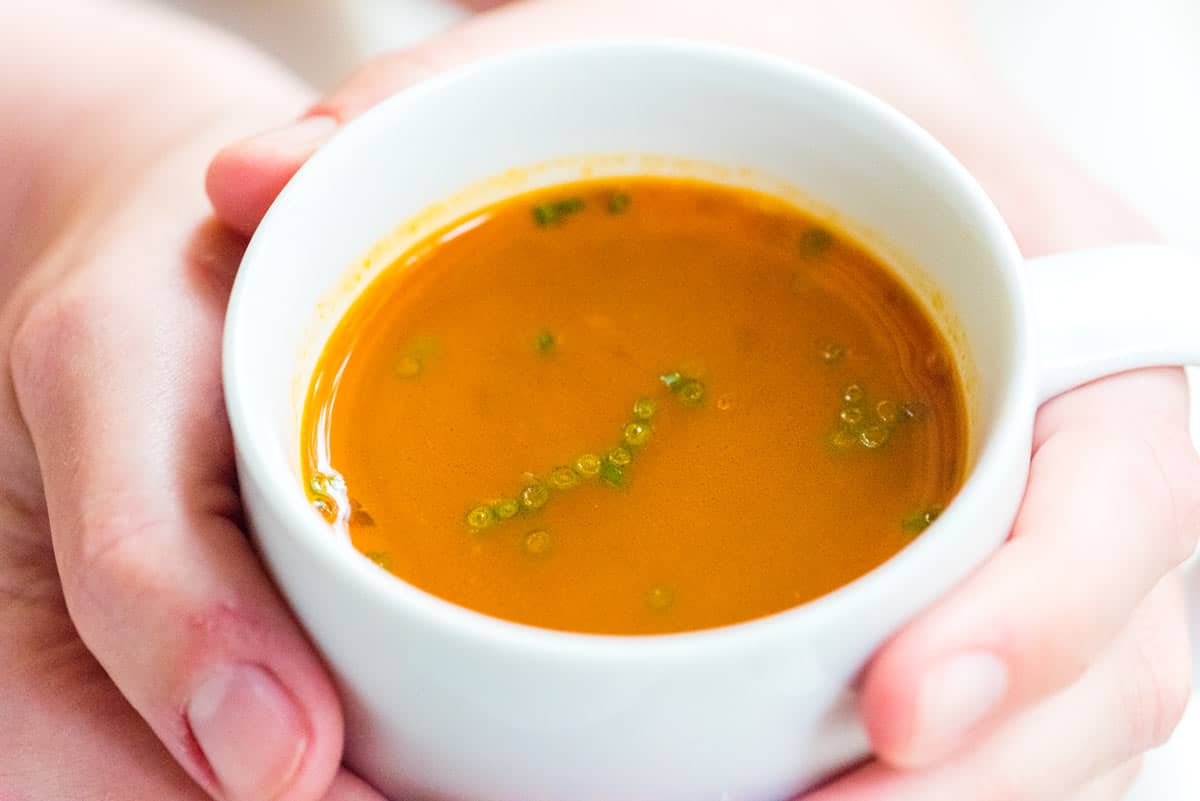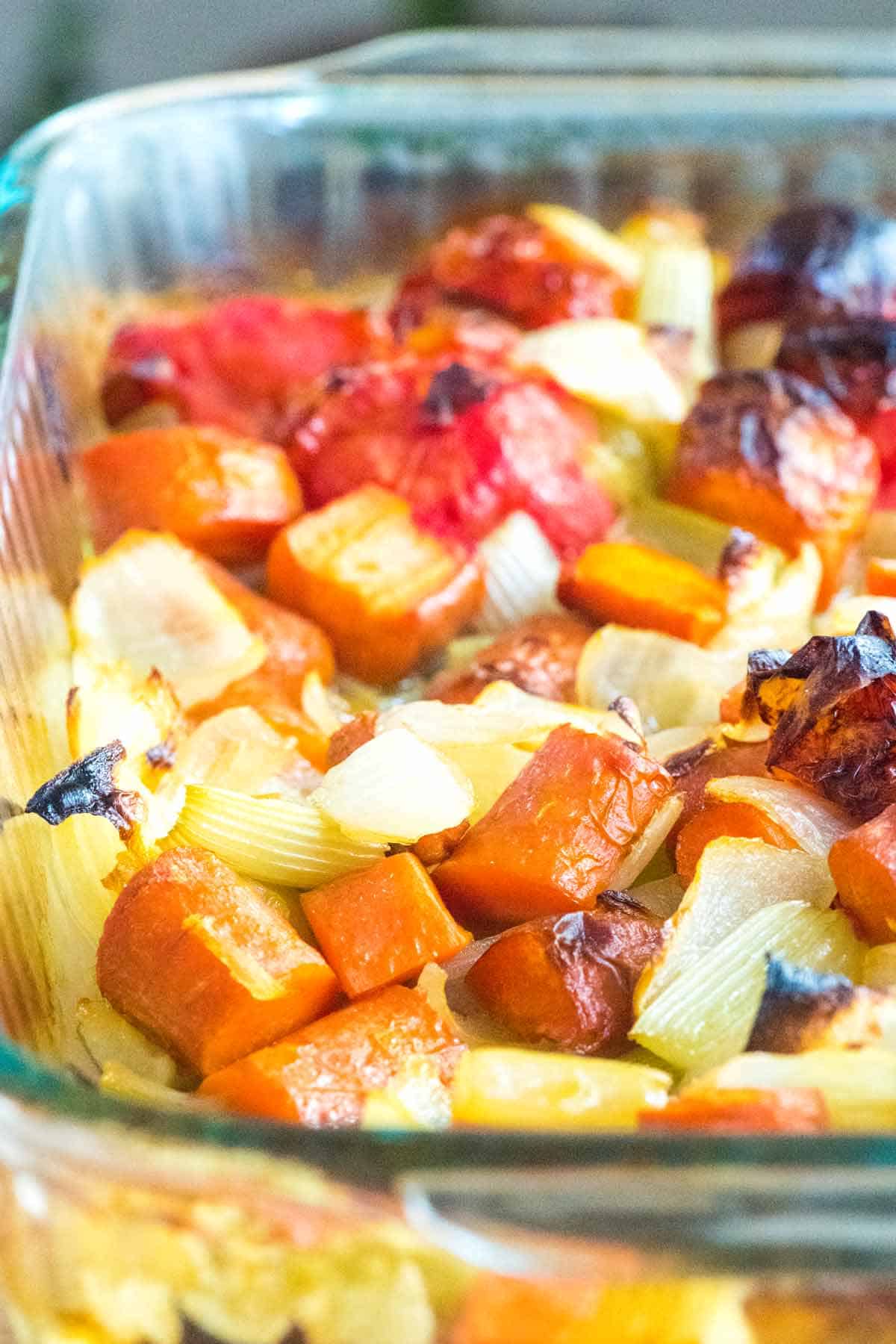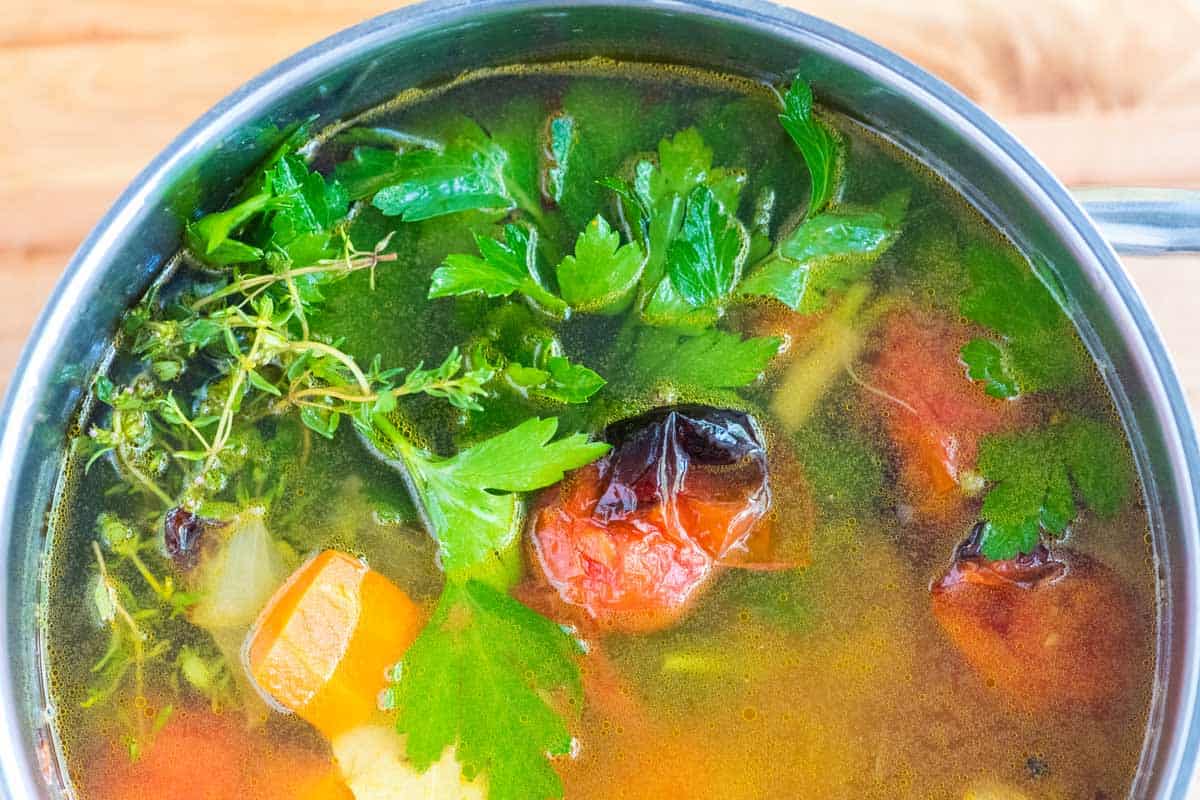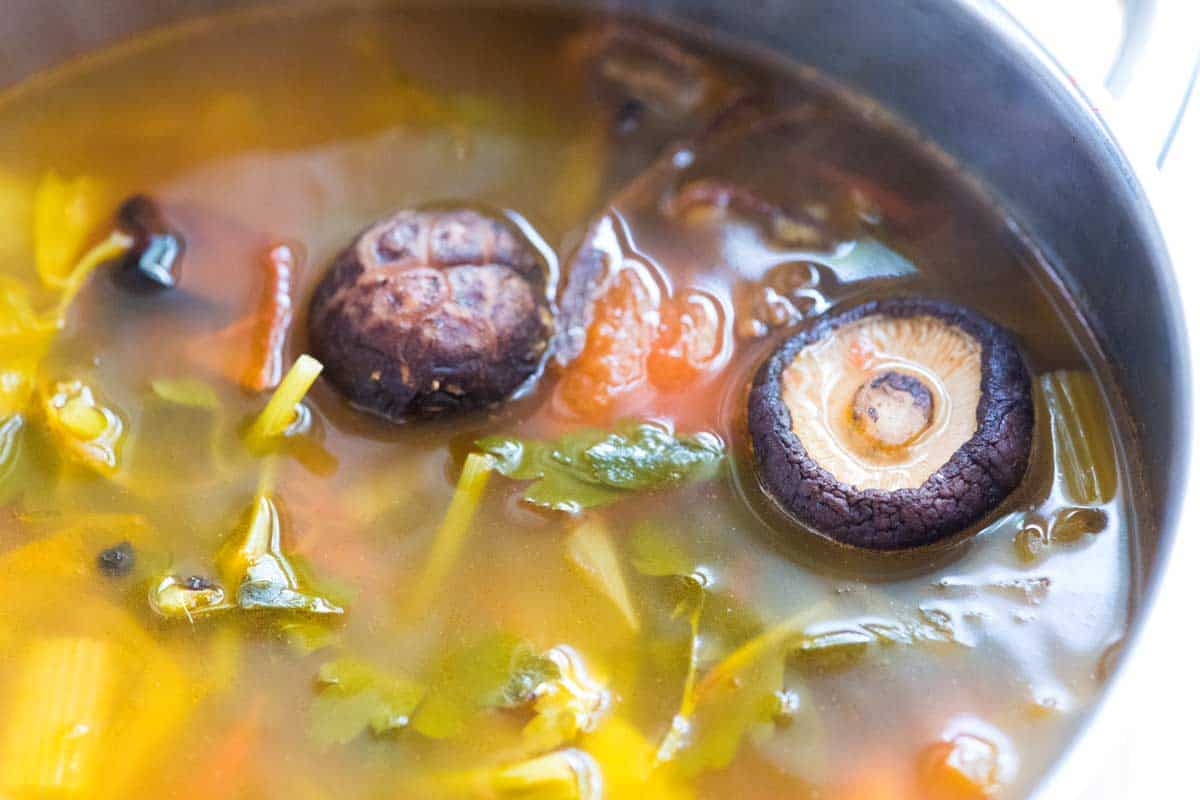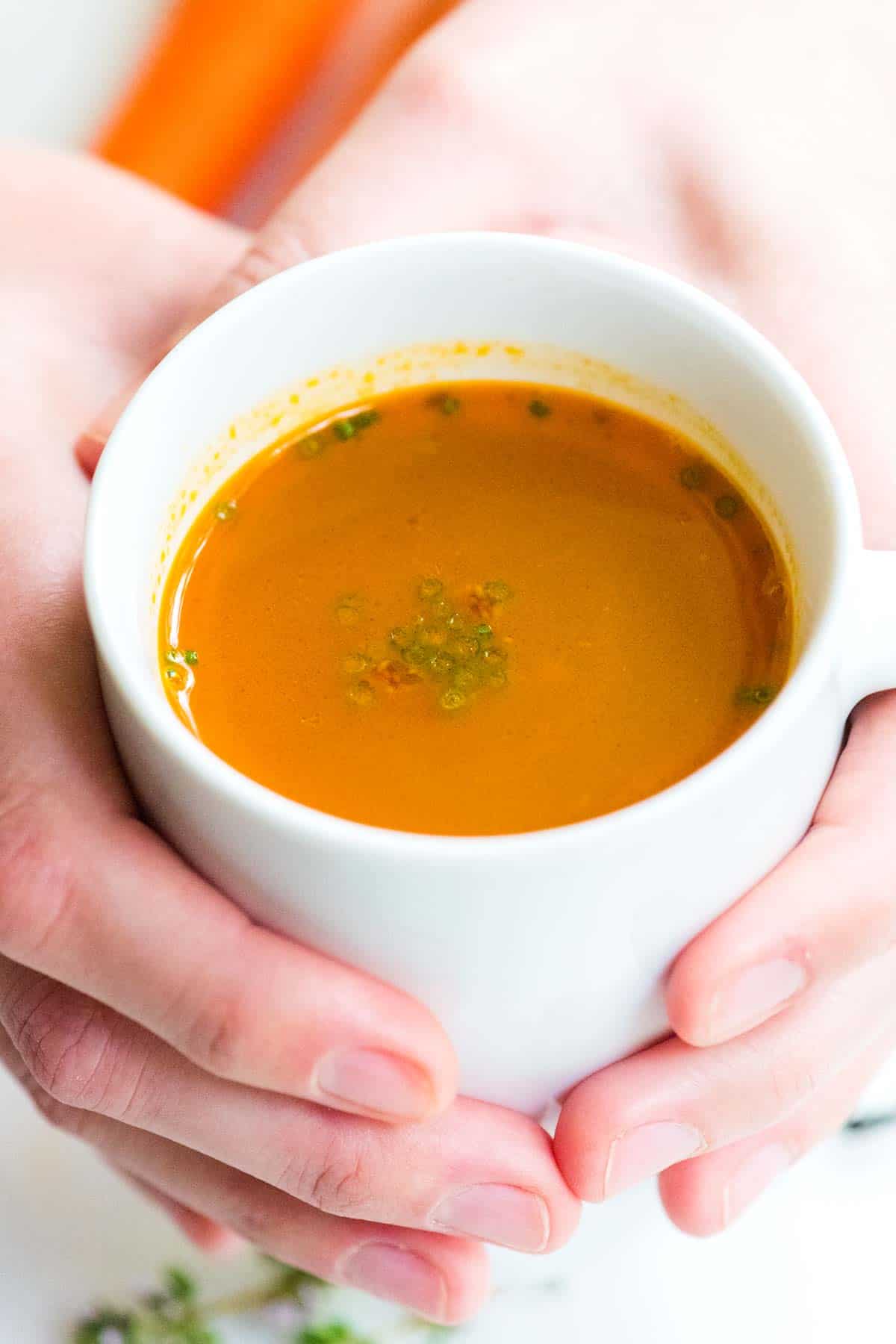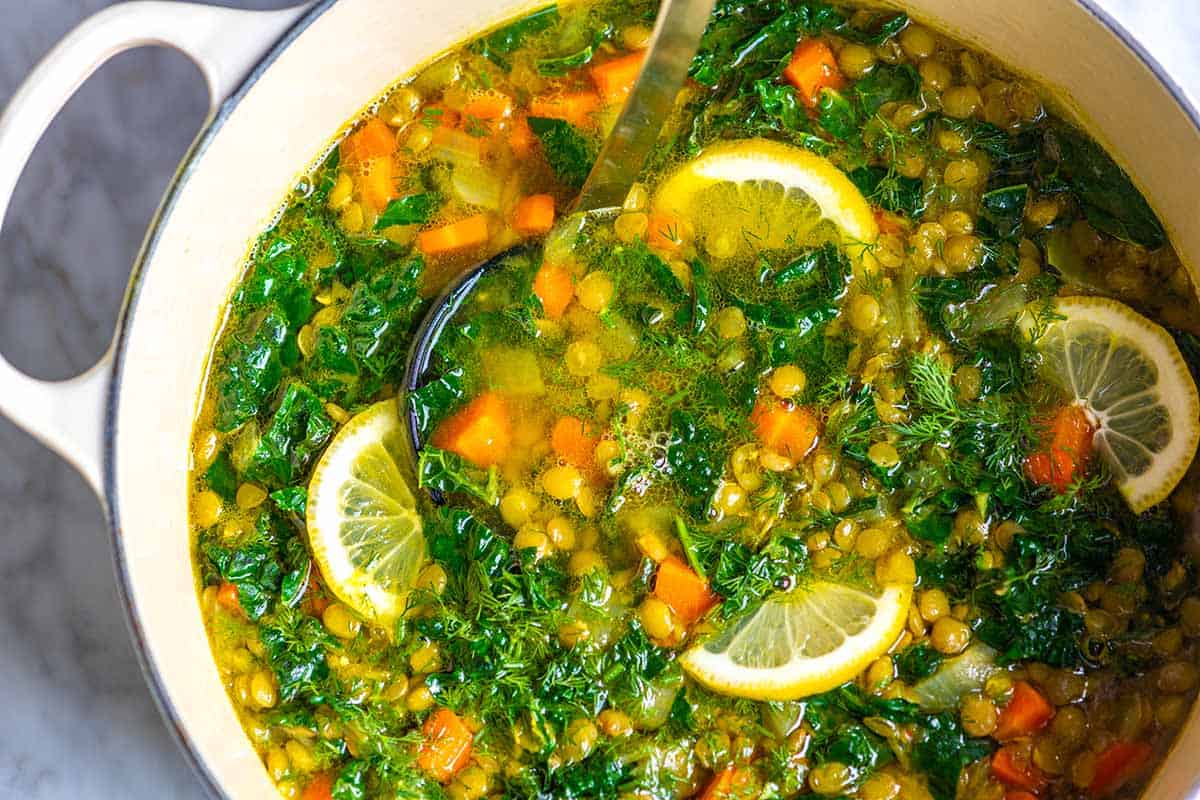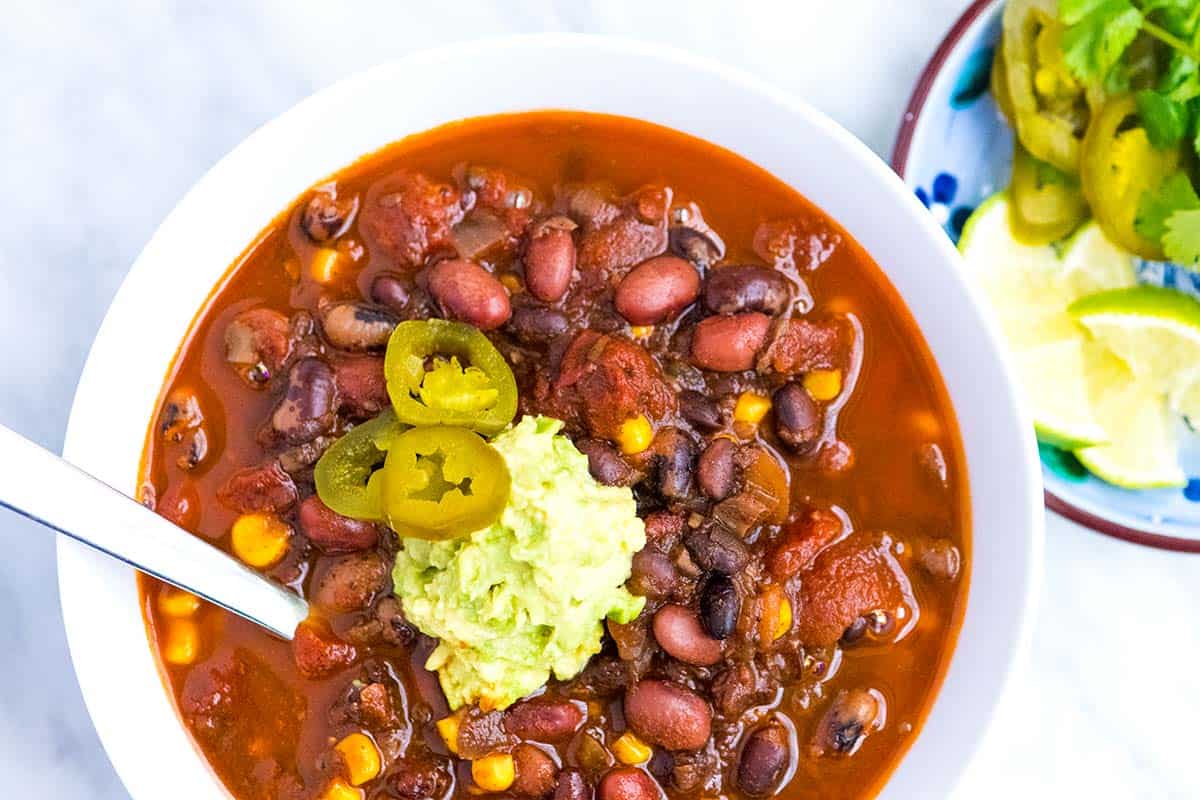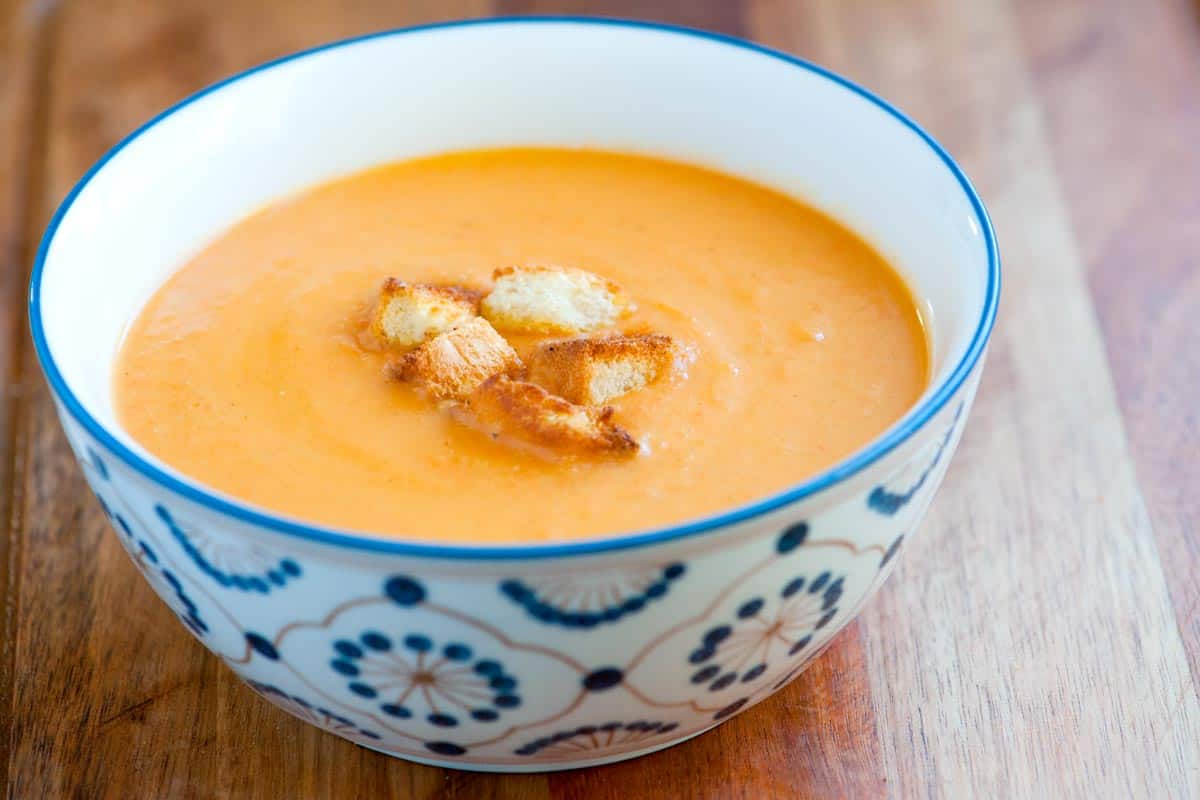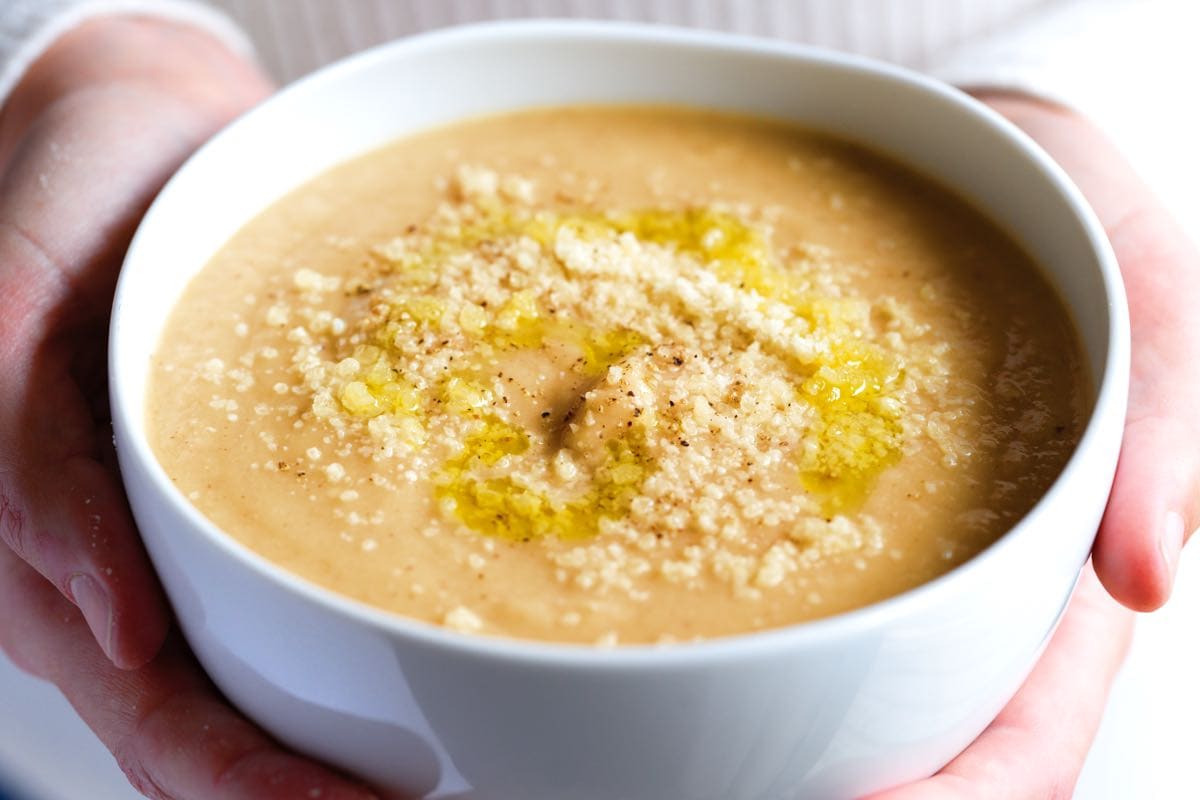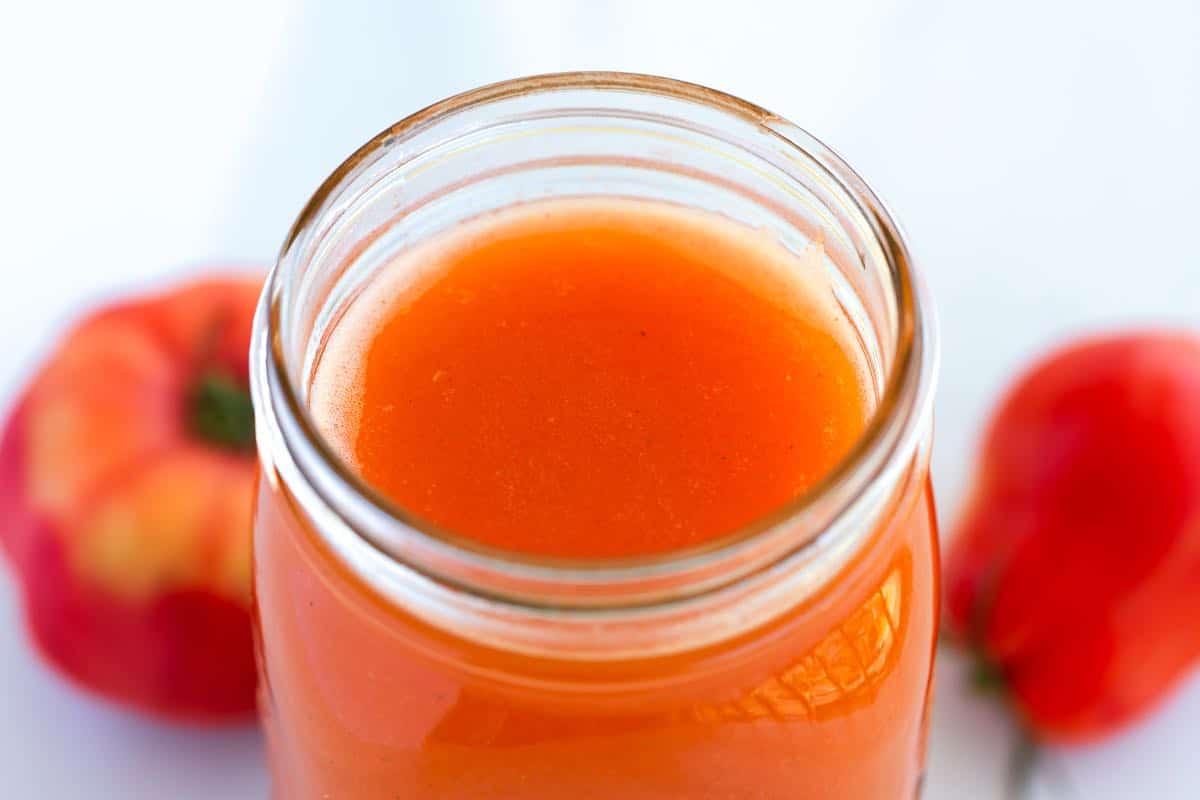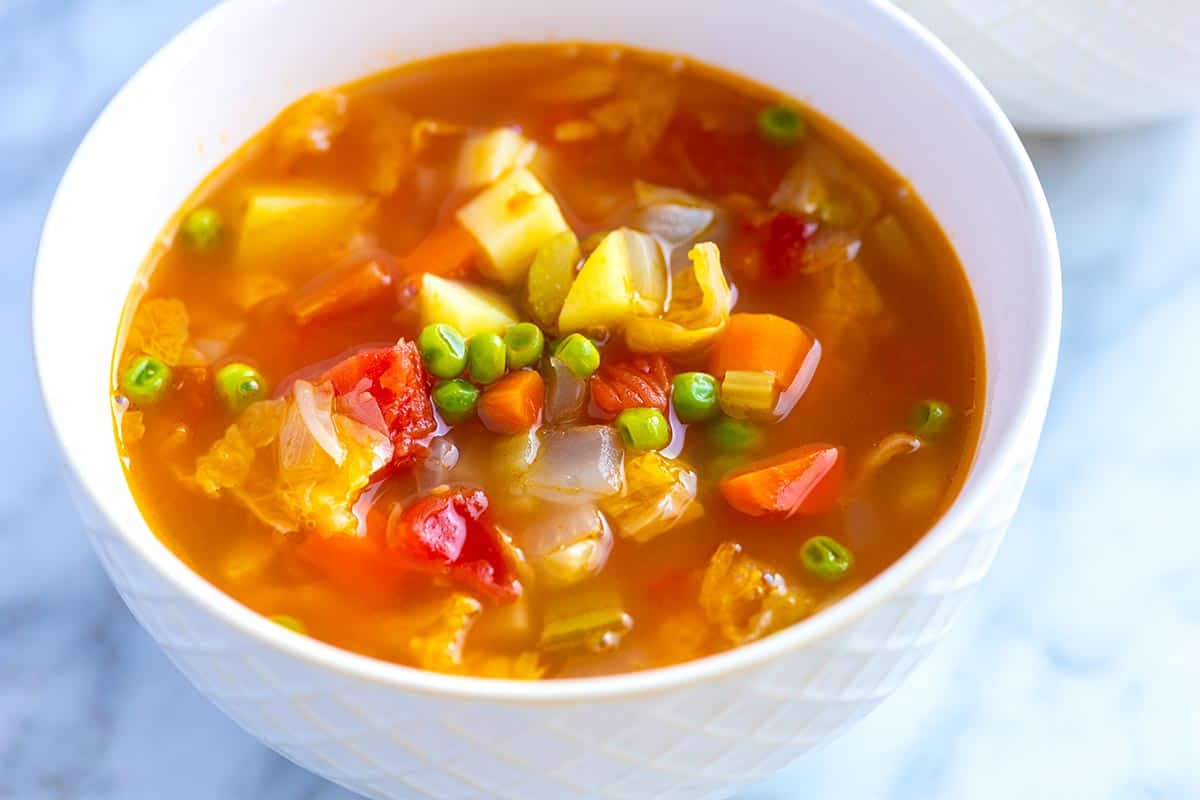We love rich chicken and bone broths, so it was a challenge to create a meatless vegetable broth that makes us just as happy. After a few tries, we came up with this rich, hearty veggie broth recipe. I could not be happier with how this turned out. I know you’ll love it. I often enjoy this homemade vegetable broth without anything added (it’s so satisfying) and use it as a substitute for chicken broth in my favorite soup recipes (also see these recipes for vegetable soup and creamy potato soup).
How to Make Homemade Vegetable Broth
First, roast your vegetables for a rich and satisfying broth. Roasting onion, carrots, celery, tomatoes, and garlic until nicely brown intensifies the broth’s flavor and adds color. The roasted vegetables add a rich, satisfying quality to the broth. Second, add tomatoes. Tomatoes add sweetness, color, and umami. Tomatoes are naturally high in glutamate, which means they help out with that “fifth taste.” Umami makes dishes taste good, adding that super delicious quality. By adding tomatoes to the broth, it becomes rich and crave-worthy. Finally, use dried mushrooms. Even though we didn’t add any bones or meat to this recipe, we still had to have some “meatiness” in the broth. Mushrooms are the solution. Just one ounce of dried mushrooms turns this veggie broth from okay to something you question whether it’s vegetarian. With my three easy tricks, you can make rich, crave-worthy vegetable broth in under two hours. We sip on it during the day, have used it to make vegetable noodle soups, and have already used it in some of our favorite soup recipes. This homemade veggie broth is definitely something you should add to your kitchen (it even freezes for up to three months!).
Ways to Use Homemade Vegetable Broth
I sip on this vegetarian broth without anything added and use it to make vegetarian dishes. Some of my favorite recipes where I’ve used this hearty veggie broth are this lentil soup with lemon, this dreamy butternut squash soup with crispy chickpeas, and this hearty veggie tortellini soup. I also use it to cook rice and grains. Try swapping it for water to make quinoa or this incredible cilantro lime rice! Think of the recipe below as a guide, and feel free to add any vegetable scraps in your fridge or freezer. Leeks, turnips, or mushroom scraps are all excellent. For even more richness, we add dried mushrooms (these can be purchased online, and I often find them in the spice aisle of larger grocery stores). They pack a punch and add a “meatiness” to the broth. 1 pound (450g) carrots, 5 medium 1/2 pound (226g) celery, 4 to 5 1 pound (450g) tomatoes, 3 medium 4 garlic cloves, smashed and peeled 2 tablespoons olive oil 1/2 ounce (14g) dried mushrooms such as porcini, oyster or shiitake Half a bunch of fresh parsley 3 sprigs fresh thyme 2 bay leaves 1 to 2 cups vegetable scraps from fridge or freezer, optional 1 teaspoon sea salt, optional 12 cups (2.8L) water, preferably filtered 2Peel the onion and roughly chop it into 1-inch chunks. Scrub the carrots and celery and cut them roughly into 1-inch chunks. Rinse the tomatoes, and if they are large, half or quarter them. 3Add onion, carrots, celery, tomato, and garlic to the baking sheet. Toss with olive oil and roast for 15 minutes. Stir the vegetables and roast for another 15 minutes. Stir once more and roast until the vegetables are nicely browned and the tomatoes are caving in, another 10 minutes or so. 2Spoon the roasted vegetables into a tall stockpot. Add 1 cup of water to the baking sheet or pan, then stir it around, scraping up as much of the browned bits stuck to the bottom as possible. Pour over the vegetables in the stockpot. 3Add the parsley, thyme, bay leaves, vegetable scraps, and salt (if using). 4Add the partially rehydrated mushrooms, and then pour the water they sit in through a fine mesh strainer to catch any grit. Add the strained mushroom water to the pot with vegetables. 5Cover with 11 cups of water. Bring to a boil, then reduce to a simmer. Cook, partially covered, for 45 minutes. 6Strain broth and use immediately, refrigerate for up to 3 days, or freeze for up to 3 months. When using, taste the broth and adjust the seasoning with additional salt or, if you are okay with using it, a few dashes of fish sauce.
